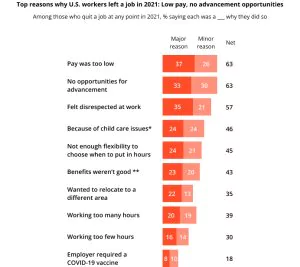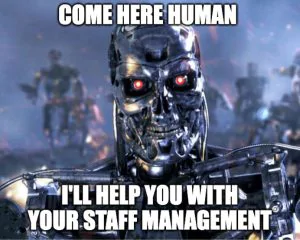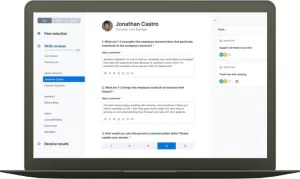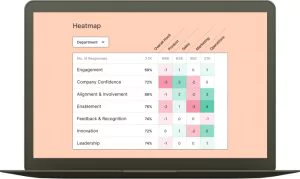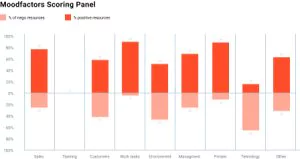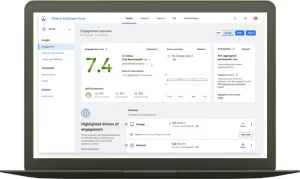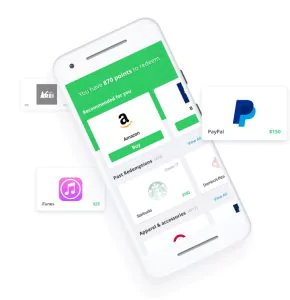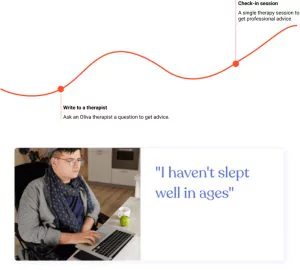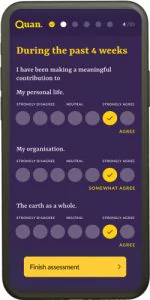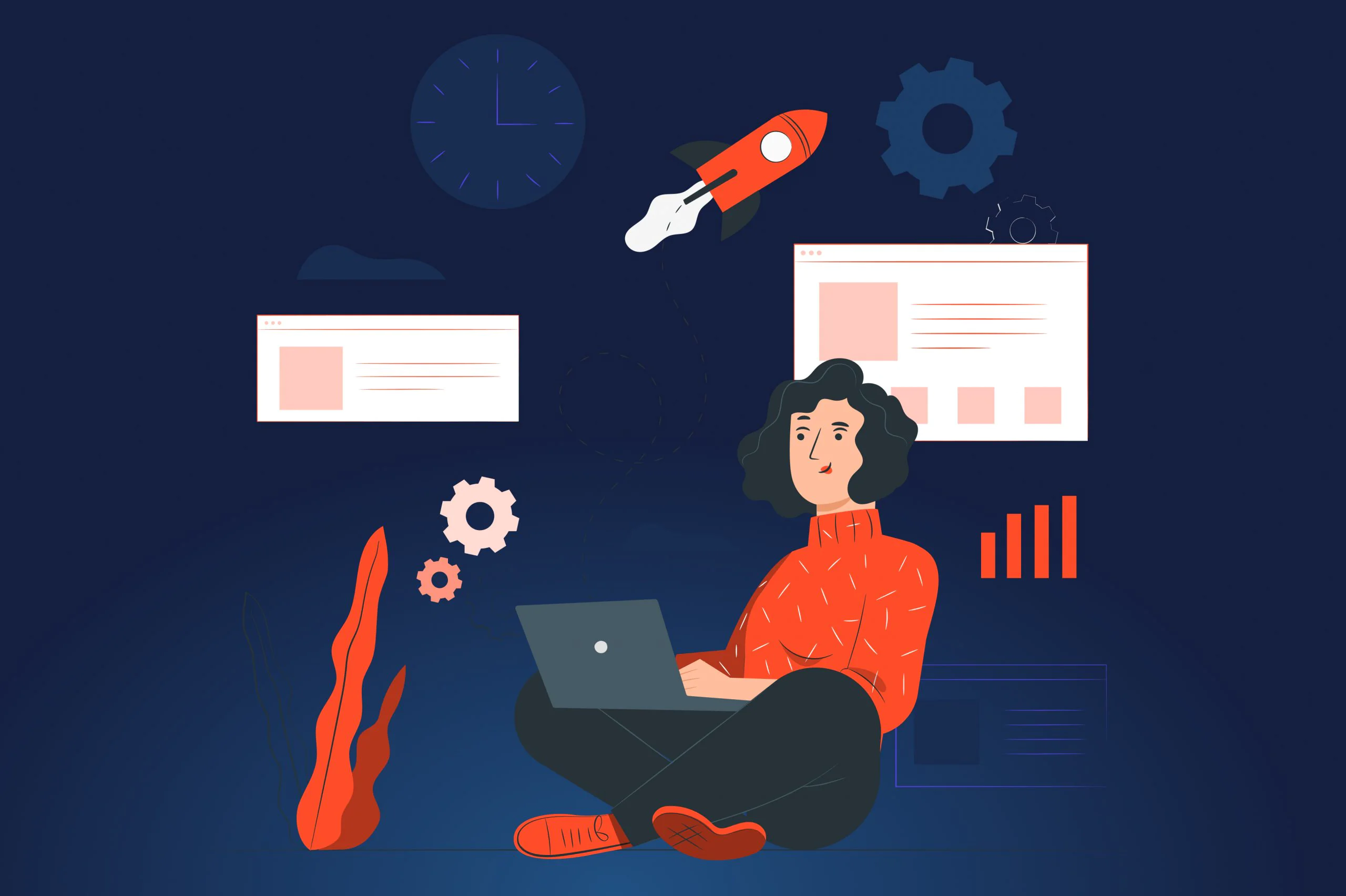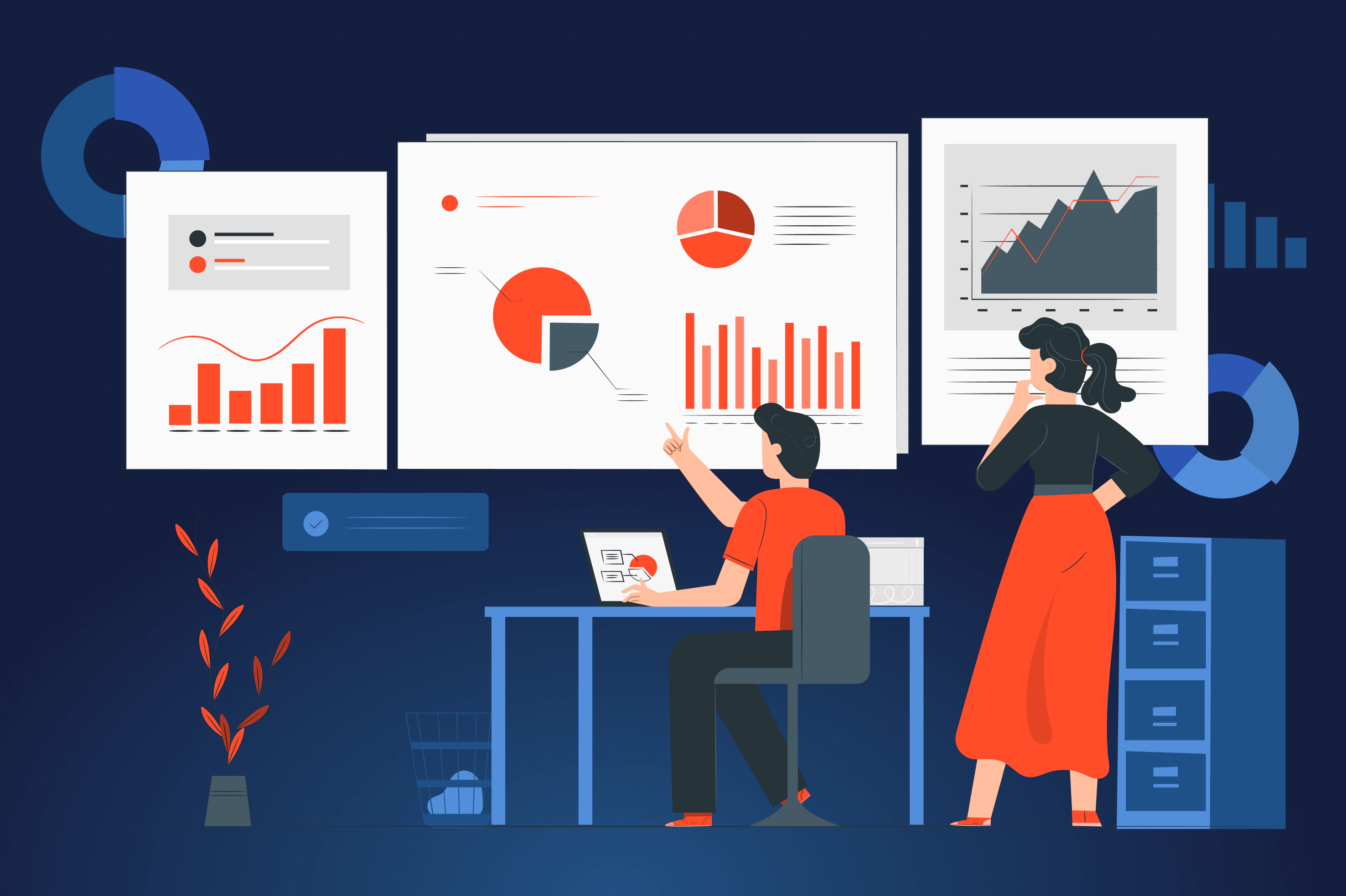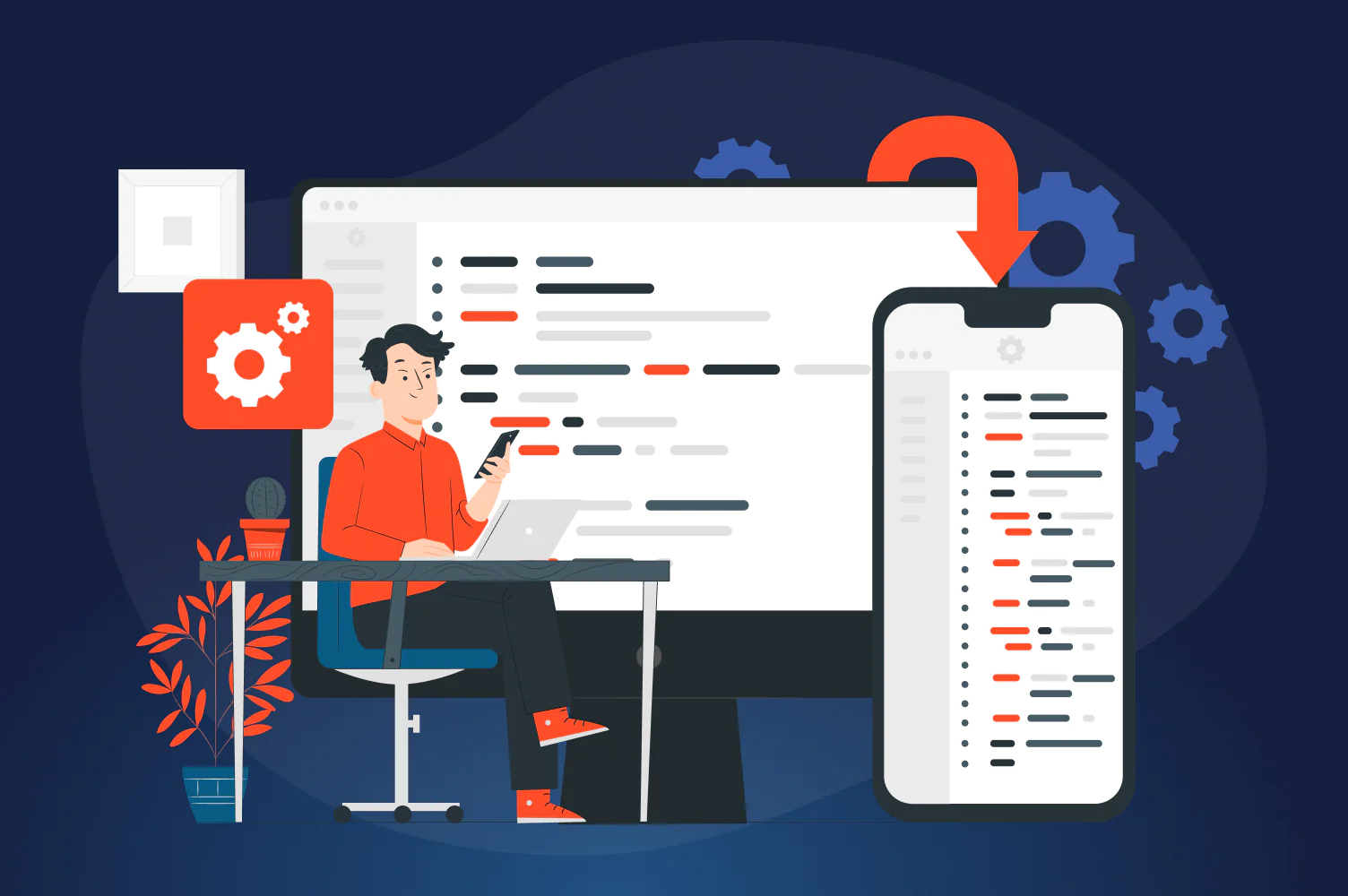“The rise of machines will be the end of humanity” — a typical line for a sci-fi movie. Unfortunately, things worse than the robot uprising are already happening at a real-life workplace: we’re becoming machines ourselves.
Pew Research Center reports that 57% of workers quit their job because of feeling disrespected, while 63% don’t see any opportunity for growth and doing a meaningful job. The lack of employee-centered culture, combined with a feeling of being disconnected due to the remote work are the main reasons why staff don’t feel positive about their job and companies they work for.
However, another extraordinary thing is happening right now. HR software solutions and smart technologies help to humanize work environments by providing managers with insights about employee behaviors, their moods, career aspirations, things they dream about, and so on. Garry Kasparov, a former world chess champion and now artificial intelligence consultant said in his TED talk speech: “Don’t fear intelligent machines. Work with them.”
And that’s what many businesses do when they adopt employee engagement software. So, it’s high time you come up with your own product, but it’s crucial to know what companies need to make their human resource management more people-focused. That’s why the JatApp team is going to discuss top employee engagement trends, so you can better understand what solution you can develop today.
Human workplace problems that digital technologies can solve now
When you know what pain points companies are challenged with, you’ll have a better understanding of what kind of solution they need. So, let’s discuss the workplace problems that set trends for employee engagement software today.
Remote work
With the outbreak of the COVID-19 pandemic, remote work has become a regular practice for many companies. Nevertheless, not all people manage to work effectively from their own digs. Loss of connection with coworkers as well as inability to focus on work-related tasks make many employees feel isolated from their usual work environments. As a result, people lose a work-life balance and purpose of committing to the job they used to do in the office.
Lattice aims at solving the problems mentioned above. This employee engagement platform helps to track, reward, and set goals at the workplace, especially when the entire company works remotely.
The solution involves multiple tools that gather data about employee performance to provide accurate feedback, communicate goals between managers and their teams, and inform workers about their task progress. In such a way, employees are motivated and focused on their job, even though they interact with their colleagues remotely.
Lattice performance review tab
Cultural sensitivity and employee attitudes
Businesses tend to care about diversity and inclusion to make their performance more effective and establish their firm as the one that stands on the principles of social justice. Nonetheless, the way businesses handle such complicated tasks leaves much to be desired. Recruitment of employees that represent minorities and underprivileged groups isn’t enough to run a successful diversity strategy.
The main problem is that the other workers have a poor understanding of diverse cultures, so the situation gets only worse. Companies tend to implement diversity strategies but they fail to create a culture that is diversity-friendly.
Such a complex problem surely requires a sophisticated approach. A startup called Culture Amp has found a data-driven and science-based solution.
The employee engagement platform surveys employees and gathers other work-related data to provide HR professionals with analytics of how well employees know each other’s culture and what can be improved in this respect. Based on the analytics data, managers can teach employees about different cultures, thereby improving cultural sensitivity of the staff.
HR analytics in Culture Amp
While culture is a broad concept to work with, it’s possible to develop a solution that manages a quite basic yet important aspect of human resource management — a worker’s mood. The JatApp team worked on refactoring such an employee engagement software for our client from Denmark. After a successful code restructuring, the solution started working in the following way.
The application conducts daily surveys about employees’ mood, so managers can connect any mood changes to the employee performance and plan human resource strategy accordingly. Also, based on survey results, managers can provide a video feedback or just a text message to respond to a worker’s mood. The application enabled the company to streamline its human resource management by continuously monitoring the mood of employees and making an adequate response.
Moodfactors screen
Employee commitment
Keeping workers motivated and committed to the job they do is one of the biggest headaches of human resource management. Having a sense of purpose is important to many employees, which is why managers are constantly challenged to find ways that can help to make every single employee feel valuable.
Digital technologies enable human resource managers to make regular empowerment of employees a part of a company’s strategy. Glint, which was recently acquired by LinkedIn, provides companies with an employee development platform that helps to gather feedback on every worker and assign them a score.
Glint engagement score dashboard
The sum of the scores reflects on what aspects of their professional skills or workplace behavior can be improved. The solution offers companies to implement a feedback culture, so every interaction of employees becomes a source of knowledge that can be used for professional and personal growth. In this way, contributing to the success of the company naturally makes employees feel commitment to the team.
Staff retention
Aside from employee engagement, staff retention is another problem that bothers many human resource managers. Underpayment, motivation, flexible work, recognition, and such are the most common reasons why employees tend to leave their job and find a better one.
However, numerous exceptions are possible, so managers can’t think about reviewing salaries and empowering the workers as the one-size-fits-all strategy. They need to understand the core of the problem for every single employee individually.
Beyond a doubt, there are many employee engagement programs addressing this problem as well. For instance, Peakon offers managers an opportunity to track employee insights by accessing basic people analytics. “Just another employee engagement platform” — you may think.
But here’s a twist: Peakon enables workers to record their impressions about a workday with a voice, so artificial intelligence processes these responses and provides comprehensive analytics. Even though impressions are hard to convert in some numerical data, HR leaders can see the bigger picture of whether workers are satisfied with the job and take action to prevent staff turnover.
Peakon employee voice screen
Rewards
Many companies practice a basic reward system and offer benefits packages that are not personalized enough to present a serious value to every single employee. Consequently, workers don’t see that their efforts are truly appreciated. Moreover, HR managers realize that the situation should be improved, as only 40% of companies are confident that they run a proper bonus program.
The good news is that employee engagement software can provide businesses with an opportunity to make their reward and benefits system more personalized and therefore aligned with employee-centered management.
For example, a startup Bonusly promotes an approach of a continuous employee reward. Instead of awarding bonuses to top workers once in six months, the solution provides a system of peer employee recognition.
Each worker can give score points to their colleagues at any moment they think a particular employee deserves a praise, thereby providing feedback and helping managers to identify the most diligent team members.
Bonusly benefits
HR departments can rely on the collective feedback and come up with ideas on how to motivate employees within a short term. The score points can be converted into financial bonuses that are paid via PayPal or with products and services provided by Amazon, Tango Card, or Cadooz. Thus, each employee can spend their bonuses in the way they would like to and feel more enthusiastic about making extra effort at work.
An employee engagement program Compt takes a similar approach. An employee can select a category of products and services they would like to reimburse as a part of a company’s bonus program. When a worker spends money on some products/services within this category, they can cover the expenses with the bonuses they earned by their diligent work.
Bonus award tab in Compt
The employee engagement platform makes the bonus system extremely personalized, while the company doesn’t have to deal with each employee individually. Compt gives employees a freedom of choice, so human resource managers can sleep well without thinking about how many product/service vendors they need to engage with to make sure that all needs of the employees are covered.
Wellness
Since wellness of employees directly impacts their productivity and job satisfaction level, companies try to pay attention to how employees feel both mentally and physically. Although, the situation often gets very similar to the issue with rewards personalization. Wellness is a very subjective concept, so it’s impossible to set a common standard that will work for every single employee in the company.
For that reason, relatable startups pop up like mushrooms after rain. For instance, Tictrac uses smart algorithms to personalize educating content for every worker, so that they’re motivated to engage in various activities aimed at improvement of their wellness: physical exercise, practice of mindfulness, keeping on regular sleep schedule, and so on.
Tictrac wellness assessment
Still, many companies prefer to have a narrow-specific solution for their employee wellness strategy. Peppy is an on-point example of an employee engagement tool that focuses on healthcare benefits only.
The application connects employees to various health experts, so they can get professional guidance about almost any question from advice about protection of the immune system to a care for a newborn child. The solution helps companies make sure that employee health is managed on time as they will consult a professional health expert as soon as they have any complaints.
Chat with health expert in Peppy
In the same way, the issue of mental health at the workplace is also a problem that human resource managers aren’t always able to tackle on their own. With the rise of awareness about mental health, startups like Oliva are getting popular as well. This employee engagement solution provides personnel with access to video calls with certified mental health specialists who will provide step-by-step guidance to management of any mental health problems.
Arranging real-life consultancy may take time, while a worker can face a serious mental health problem at any moment. So, fast access helps to solve the problem and prevent complications that are quite possible in case a person doesn’t get professional aid on time.
How Oliva works
While Oliva and other employee engagement solutions mentioned above attempt to prevent staff turnover by nurturing wellness culture amongst employees, Quan pays attention to workers who are already on the verge of quitting their job. The startup’s founders believe that employee retention depends much on their wellness, which is why prevention of burnouts is the first step that managers need to take in this direction.
That is why the employee engagement solution performs a comprehensive well-being assessment of workers by measuring such dimensions as mind, body, meaning, social connection, and self-fulfillment. After assessment, managers can observe wellness reports on the level of individual employees, team, and even the entire company. Based on these analytics, the app recommends practices that can be used to improve wellness inside the organization.
Wellness assessment in Quan
Training
Last but not least, the problem HRs seem to cope with for ages is staff training. Even though many workers consider professional development an essential part of benefits provided by an employer, undergoing training is no fun. Employees take boring courses or lectures as some formal procedure they need to sleep through, so they don’t really focus on the content they’re expected to learn.
With employee engagement startups like Axonify, staff training can be exciting. Confucius said: “If some process gets boring at the workplace, gamify it”. Okay, we exaggerated the part about the Chinese philosopher a little, but we bet he would agree with that statement.
Anyway, Axonify is a learning management system that uses gamification features to make staff training fun and exciting. Instead of long boring lectures and video tutorials, employees can spend several minutes a day completing various tasks presented in the form of a game. In addition, the platform personalizes the difficulty of tasks and tracks a worker’s progress, so staff learn systematically which means they’re more likely to use new knowledge at work.
Gamified training in Axonify
Build your product with humanism in mind
You can see that the “people-first” approach is the principle that is at the core of all employee engagement trends. So, before launching a project, you have to think about people you would like to target with your solution, as their pains will determine what kind of product you need to develop.
JatApp puts people first as well, so we understand well how to build products for HR and recruitment, and this value is also one of the reasons why 99% of our customers are satisfied with our services.
Get in touch and share with us your product idea. We’ll discuss everything not just as a software development agency and a client, but as ordinary people who want to collaborate and create a digital solution that will be useful to others.
